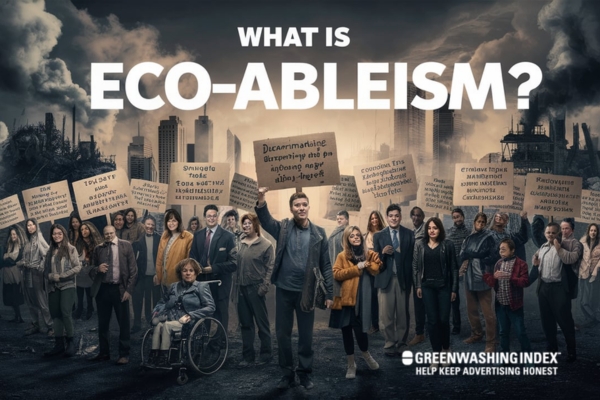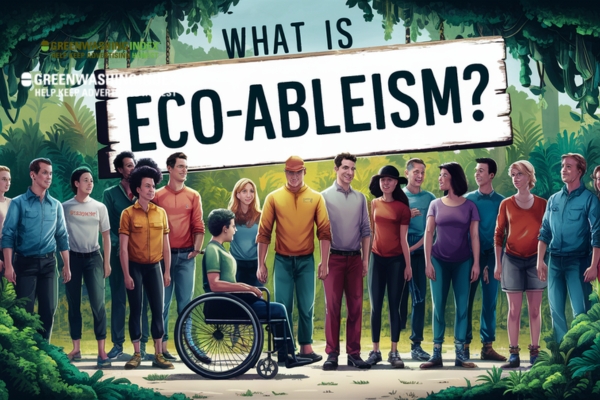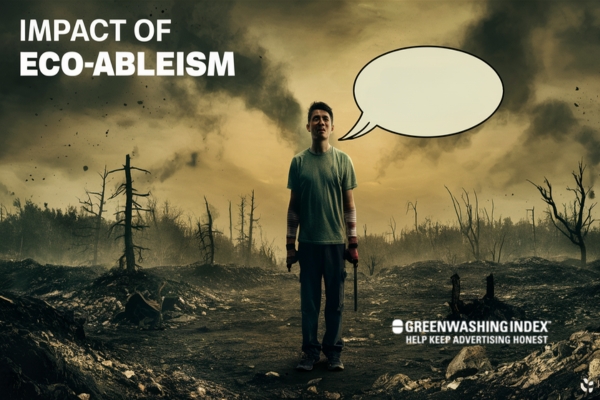

A world where the pursuit of sustainability unintentionally excludes those who need accessibility the most. Eco-Ableism addresses this reality—when environmental initiatives, like eliminating single-use plastics, overlook the needs of disabled communities.
In this article, we will uncover the concept of eco-ableism and delve into two significant strategies to counteract it, fostering a more inclusive approach to sustainability for everyone. Let’s explore solutions for a more equitable world.
Eco-Ableism is a concept that shines a light on the discrimination against those with disabilities within environmental contexts. This often happens when ecological efforts fail to take into account the unique needs of disabled individuals.

For instance, while many environmental campaigns aim to promote sustainable living, they sometimes inadvertently exclude disabled people. One example is the push for zero-waste lifestyles, which can assume that everyone has the ability to make such changes without difficulty.
This oversight can lead to situations where some individuals are left out of critical environmental initiatives. It’s important to highlight that these movements, though well-meaning, can unintentionally marginalize those they don’t consider. Furthermore, eco-ableism is a pressing issue that affects both the effectiveness and fairness of environmental movements.
When solutions are proposed without considering accessibility, they risk perpetuating existing inequalities. For example, policies such as banning plastic straws or exclusively promoting public transport can create challenges for disabled individuals who rely on these conveniences.
The concept of eco-ableism has evolved as the environmental movement has broadened its focus to include disability rights. Early environmental initiatives often emphasized reducing waste and conserving resources without considering how such policies could inadvertently exclude disabled individuals.
Over time, increased awareness of the intersection between disability and sustainability brought about a shift, urging the environmental movement to prioritize inclusivity and accessibility.

Key origins and evolution points include:
This journey demonstrates the growing recognition of the importance of accessibility within environmental initiatives. By learning from past oversights, there is now a stronger push towards creating movements that truly embrace diversity and inclusivity.
Eco-Ableism is a term that many might not be familiar with, yet its impact is significant, especially on disabled communities. While the intention behind eco-friendly practices is commendable, there are often unintended consequences.

These consequences can be particularly challenging for those with disabilities, affecting their daily lives and access to resources. Let’s explore how Eco-Ableism affects these communities and the broader environment.
Eco-ableism creates significant barriers for disabled communities in various ways. Many eco-friendly practices can inadvertently complicate life for individuals who depend on certain items for accessibility.
For instance, the push to eliminate single-use plastics may limit options for those who rely on these products. Additionally, transportation systems designed with sustainability in mind often fail to accommodate mobility aids, making travel more difficult.
Eco-ableism extends beyond individual experiences, impacting broader environmental initiatives as well. When sustainability practices overlook the needs of all community members, it can lead to diminished support for environmental efforts.
This exclusion fosters resistance to change, as individuals may feel their voices and needs are disregarded. Additionally, a lack of diversity within environmental movements weakens the effectiveness of these initiatives, as they fail to represent the perspectives of those affected.
Counteracting eco-ableism is all about breaking down barriers that keep disabled individuals from fully participating in environmental movements.

By focusing on inclusive policies and making sustainability practices more accessible, we can ensure that everyone has a fair chance to contribute to and benefit from environmental initiatives. Let’s get into two key ways to achieve this.
Creating inclusive environmental policies is vital to ensuring that everyone, including individuals with disabilities, can actively engage in sustainability efforts. By prioritizing inclusivity, policymakers can help remove barriers that prevent disabled individuals from participating in environmental initiatives.
This involves considering diverse needs during the planning and implementation stages to create a more equitable framework for all community members. Here’s how we can make policies more inclusive:
By focusing on these areas, we can create environmental policies that are not only inclusive but also effective in addressing the unique needs of disabled communities.
Also Read: Earth Day Revolution: Discover 10 Mind-Bending Eco Tips!
Enhancing accessibility in sustainability practices is crucial to ensuring that everyone can participate in and contribute to ecological efforts.
By integrating inclusive design principles, organizations can create environments where individuals with disabilities feel empowered to engage in sustainability initiatives. Here’s how we can make these practices more accessible:
By focusing on these aspects, we can create a sustainability movement that welcomes everyone. This not only enriches the movement with diverse perspectives but also ensures that environmental actions are truly accessible to all.
Misunderstanding disability often results in the creation of unnecessary obstacles for individuals with disabilities. These misconceptions can influence how people perceive, interact with, and accommodate those with diverse abilities.
Here are some common areas where misunderstandings occur:
These misunderstandings create social and practical barriers, impacting individuals’ treatment in daily life and policy-making. By promoting awareness and recognizing these misconceptions, we can foster a more inclusive society where everyone is treated with respect and equality.
In the quest to understand eco-ableism and counteract its effects, we explore the essential balance between sustainability and disability inclusion. Recognizing the impact of eco-ableism on marginalized communities is crucial for fostering a healthier environment for all.
By advocating for inclusive environmental policies and improving accessibility, we can make significant strides toward a more equitable society. As we strive for a world that values and respects every individual, misunderstanding disability is no longer an option.
